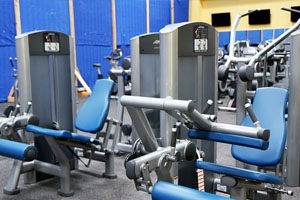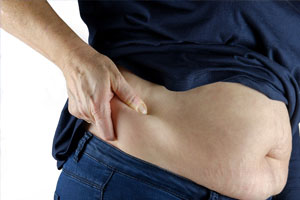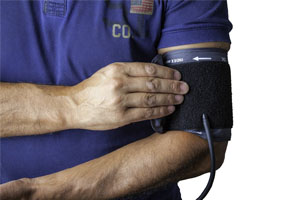Discover the fastest path to weight loss through exercise Explore effective workouts, expert advice, and healthy strategies to shed pounds quickly Find out which exercises work best
Understanding the intricate relationship between weight loss and exercise is essential for anyone aiming to shed unwanted pounds. While many factors contribute to successful weight loss, exercise is a fundamental component of the journey.
Exercise helps you create a caloric deficit, which means burning more calories than you consume. This deficit is crucial for weight loss because it prompts your body to tap into its fat stores for energy.
However, not all exercises are created equal when it comes to weight loss. The type, intensity, and duration of your workouts play significant roles in how effectively you can shed those extra pounds. A balanced approach to exercise should ideally include a mix of cardiovascular exercises, strength training, and flexibility routines.
Cardiovascular exercises, such as running, cycling, or swimming, elevate your heart rate and burn calories during your workout. High-intensity cardio workouts, like interval training, can provide rapid calorie burn and promote weight loss.
Strength training, on the other hand, helps you build lean muscle mass. Muscle burns more calories at rest than fat, so increasing your muscle mass contributes to a higher metabolism. Compound strength training exercises, which engage multiple muscle groups simultaneously, are particularly effective for weight loss.
Flexibility exercises, like yoga or stretching, support overall fitness and well-being. They improve your range of motion and may help prevent injuries, allowing you to maintain a consistent workout routine.
Incorporating a combination of these exercise types into your routine, along with a balanced diet, is a proven approach to achieving sustainable weight loss. It's important to consult with a fitness expert or healthcare professional to create a personalized exercise plan tailored to your goals and physical condition.
By comprehending the role exercise plays in weight loss and adopting a well-rounded fitness regimen, you can embark on a journey toward a healthier, fitter, and happier you.

Cardiovascular Exercises for Weight Loss
Cardiovascular exercises, often referred to as cardio workouts, are a cornerstone of effective weight loss programs. These exercises focus on elevating your heart rate and increasing your overall energy expenditure, making them a valuable component of any weight loss regimen.
One of the primary advantages of cardiovascular exercises is their ability to burn a significant number of calories during your workout. Activities like running, cycling, swimming, and brisk walking can help you create a caloric deficit, which is essential for weight loss. When you consistently burn more calories than you consume, your body begins to use stored fat for energy, resulting in weight loss.
High-intensity cardiovascular workouts, such as interval training, are particularly effective for weight loss. These workouts involve alternating between short bursts of high-intensity effort and brief recovery periods. This approach can boost your metabolism, increase your calorie burn both during and after exercise, and promote fat loss.
Furthermore, cardiovascular exercises offer additional benefits, including improved heart health, enhanced lung capacity, and increased endurance. They can help reduce the risk of various health conditions, such as heart disease, diabetes, and high blood pressure.
When incorporating cardiovascular exercises into your weight loss routine, it's important to choose activities that you enjoy and can sustain over the long term. Consistency is key to achieving and maintaining weight loss goals. Whether it's dancing, playing a sport, or simply going for a jog, finding activities that you find enjoyable can make your weight loss journey more enjoyable and successful.
Before starting any new exercise program, especially if you have underlying health concerns, it's advisable to consult with a healthcare professional or fitness expert to ensure your safety and design a program that meets your individual needs.
Understanding the Role of Strength Training in Weight Loss
While cardiovascular exercises are often associated with weight loss, strength training is equally important and offers unique benefits in the pursuit of a healthier body. Strength training, also known as resistance training, involves activities designed to increase muscular strength and endurance through the use of weights or resistance bands.
One of the significant advantages of strength training is its ability to build lean muscle mass. Muscle tissue is metabolically active, meaning it burns calories even at rest. This increase in muscle mass can help boost your basal metabolic rate, making it easier to maintain a healthy weight in the long run. Unlike some misconceptions, strength training doesn't lead to extreme muscle gain for most individuals but rather a toned and sculpted physique.
Moreover, strength training helps with weight loss by enhancing fat loss and improving body composition. As you build muscle and reduce body fat, you may notice that your clothes fit better and your body becomes leaner. Strength training exercises target various muscle groups, helping to create a more balanced, proportionate appearance.
Another advantage of strength training is its ability to improve overall physical function and reduce the risk of injury. By strengthening the muscles, you increase your body's stability and resilience. This is particularly beneficial when you combine strength training with cardiovascular exercises to create a well-rounded fitness routine.
It's essential to remember that a comprehensive exercise regimen for weight loss often includes both cardiovascular and strength training exercises. This balanced approach ensures that you benefit from the advantages of both types of workouts. A fitness routine that incorporates strength training might include activities like weight lifting, bodyweight exercises, or resistance band workouts.
Before beginning any new exercise program, especially if you're new to strength training, it's advisable to consult with a fitness professional to learn proper techniques and ensure your safety. They can help you design a strength training program that aligns with your fitness goals and abilities.
The Efficacy of High-Intensity Interval Training (HIIT) in Weight Loss
High-Intensity Interval Training (HIIT) has gained immense popularity in recent years due to its effectiveness in weight loss and overall fitness. This form of exercise involves short bursts of intense activity followed by brief periods of low-intensity recovery or rest. HIIT can be performed with a variety of exercises, such as sprinting, cycling, or bodyweight movements.
One of the primary reasons for the success of HIIT in weight loss is its ability to increase your heart rate and metabolism significantly. During the high-intensity phases, your body burns a substantial number of calories, and this calorie expenditure continues even after your workout is over. This phenomenon is known as excess post-exercise oxygen consumption (EPOC), or the "afterburn" effect, which can lead to more calories burned in the hours following your workout.
Additionally, HIIT is known to improve insulin sensitivity, which can assist in regulating blood sugar levels and reducing fat storage. The intensity of HIIT prompts the body to use stored fat for energy, contributing to fat loss. Over time, regular HIIT workouts can help reduce both visceral fat (the fat stored around organs) and subcutaneous fat (the fat stored just beneath the skin).
Moreover, HIIT is a time-efficient form of exercise. Most HIIT sessions last between 15 to 30 minutes, making it suitable for those with busy schedules. You can achieve significant results with shorter workout durations, which can be particularly motivating for those who struggle to find time for prolonged exercise routines.
It's important to note that HIIT may not be suitable for everyone. The high-intensity nature of these workouts can be challenging, and individuals with certain health conditions should consult a healthcare professional before starting an HIIT program. Additionally, it's crucial to maintain proper form and technique to prevent injuries.
In conclusion, High-Intensity Interval Training (HIIT) is a highly effective exercise strategy for weight loss. Its ability to elevate heart rate, boost metabolism, and promote fat loss makes it a valuable addition to any weight loss regimen. If you're new to HIIT, consider starting slowly and gradually increasing the intensity and duration of your workouts.
Low-Impact Exercises: Your Path to Weight Loss Success
Low-impact exercises are an excellent option for individuals looking to shed excess pounds while being mindful of their joints and minimizing the risk of injury. These workouts are designed to reduce the stress on your bones and joints, making them suitable for people of various fitness levels, including beginners and those with certain medical conditions.
Walking is one of the most accessible and effective low-impact exercises for weight loss. A brisk walk can elevate your heart rate, increase your metabolism, and help burn calories. To make it even more effective, consider incorporating intervals of faster walking or walking on an incline.
Swimming is another fantastic low-impact exercise that engages multiple muscle groups while being gentle on your joints. Water provides resistance, making every movement more challenging and calorie-burning. Whether it's freestyle, breaststroke, or water aerobics, swimming can help you achieve your weight loss goals.
Cycling, especially on a stationary bike, offers a low-impact yet highly effective way to burn calories. You can adjust the resistance and speed to create a challenging workout. Indoor cycling classes or guided cycling apps can help you stay motivated and push your limits.
Yoga and Pilates are ideal for enhancing flexibility, balance, and core strength. While they may not be as intense in calorie burning as some other exercises, they play a crucial role in toning and shaping your body. Their meditative aspects can also promote mindfulness, which may lead to better food choices and eating habits.
One advantage of low-impact exercises is that they can be sustained for more extended periods. Consistency is key in weight loss, and activities that are easy on the body encourage regular participation. Remember that any exercise, including low-impact options, can contribute to weight loss when paired with a balanced diet.
Always consult with your healthcare provider or a fitness professional before starting a new exercise routine, especially if you have underlying health concerns or physical limitations. They can help you choose the most suitable low-impact exercises that align with your weight loss goals.
Combining Exercise with a Healthy Diet
When it comes to achieving your weight loss goals, exercise and diet go hand in hand. While physical activity helps burn calories and build lean muscle, a healthy diet provides the essential nutrients your body needs and controls your calorie intake. Combining both is a powerful strategy for successful weight loss.
A well-balanced diet should include a variety of foods rich in fruits, vegetables, lean proteins, whole grains, and healthy fats. Avoid or limit foods high in sugar, saturated fats, and empty calories. Pay attention to portion sizes to prevent overeating. Consider consulting with a registered dietitian or nutritionist to create a personalized meal plan that aligns with your fitness goals.
Pairing a balanced diet with regular exercise amplifies your results. Cardiovascular exercises like walking, swimming, or cycling can help you burn calories and improve your cardiovascular health. Strength training exercises, on the other hand, promote muscle growth, boost metabolism, and enhance your overall strength.
It's crucial to remember that losing weight is a matter of creating a calorie deficit. You need to burn more calories through exercise and daily activities than you consume. This is where your diet plays a significant role. By choosing nutrient-dense foods and monitoring your calorie intake, you can maintain a consistent calorie deficit.
Hydration is often overlooked but plays a critical part in both your diet and exercise. Staying well-hydrated supports your body's ability to function optimally during workouts and helps control your appetite. Make sure to drink plenty of water throughout the day, particularly before, during, and after your exercise sessions.
Remember that consistency is the key to success. Make exercise a regular part of your routine, and strive for a balanced diet daily. Incorporate a mix of cardiovascular workouts and strength training for the best results. Over time, you'll find that your efforts to combine exercise with a healthy diet will not only lead to weight loss but also improved overall well-being.
FAQs about Exercise and Weight Loss
-
Q1: What is the quickest way to lose weight through exercise?
A1: The quickest way to lose weight through exercise involves a combination of high-intensity workouts such as HIIT (High-Intensity Interval Training), strength training, and a well-balanced diet. This approach helps you burn calories, build muscle, and boost metabolism for faster results.
-
Q2: Is cardio the best exercise for rapid weight loss?
A2: Cardiovascular exercises like running, cycling, and swimming are effective for rapid weight loss as they burn a significant number of calories. However, combining cardio with strength training and maintaining a healthy diet is even more effective for quick results.
-
Q3: Can I target specific areas for quick weight loss through exercise?
A3: Spot reduction, the idea of losing weight from specific body parts through exercise, is a myth. Weight loss occurs uniformly across the body. Focusing on full-body exercises is more effective for overall results.
-
Q4: How often should I exercise for quick weight loss?
A4: To achieve rapid weight loss, aim for at least 300 minutes of moderate-intensity aerobic exercise or 150 minutes of vigorous-intensity exercise per week. It's crucial to be consistent with your workouts and maintain a balanced diet.
-
Q5: Are there any risks associated with quick weight loss through exercise?
A5: Quick weight loss can be safe if done correctly, but it's essential to avoid excessive calorie deficits or overtraining, as these can lead to health risks. Always consult a fitness professional or healthcare provider before starting an intense exercise regimen.










